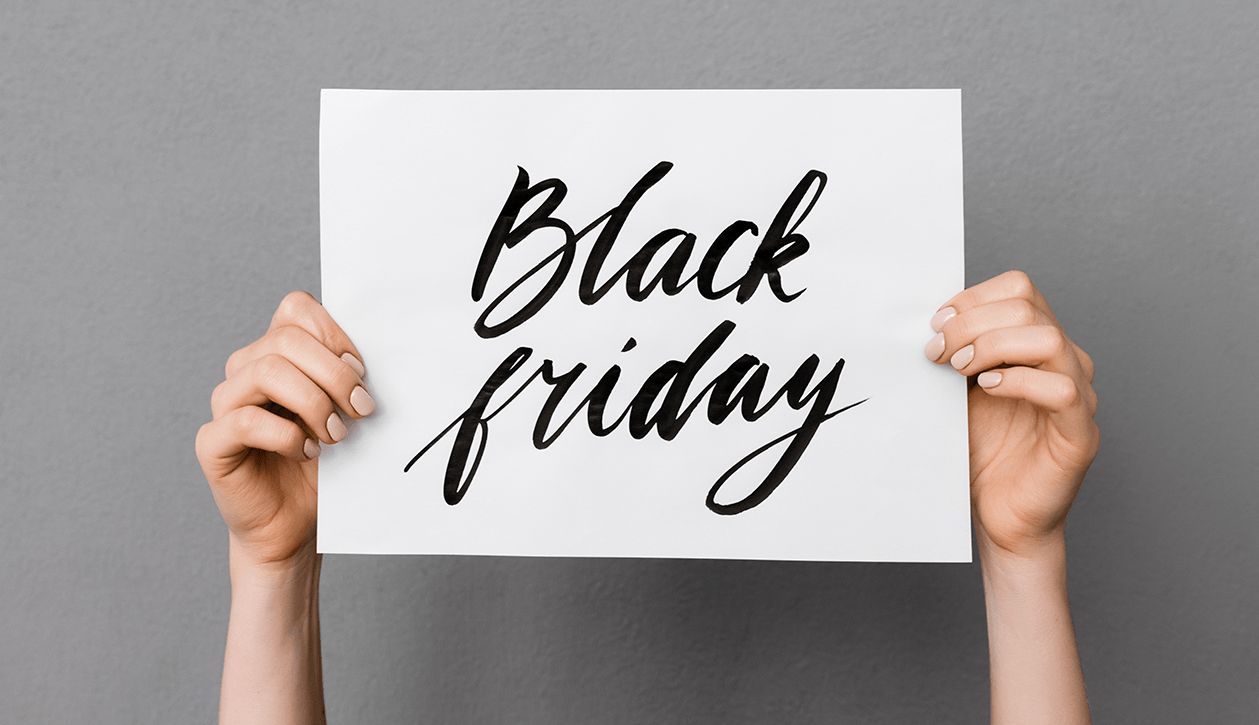As each year enters the last quarter, smart e-commerce owners start preparing for the opportunity to cash in big time during the holiday sales rushes, especially the time surrounding Black Friday.
Black Friday is officially the day after Thanksgiving in the U.S. and it marks one of the largest sales periods in retail shopping each year.
While it is the day after Thanksgiving, Black Friday sales have expanded quite a bit to the days and weeks both prior to and following that Friday.
Because so many retailers participate now, and our email inboxes start bursting with special offers and discounts, savvy retailers have started offering discounts several days prior and even several days after most other retailers.
Here are the major dates to keep in mind as you prepare for the 2019 Black Friday season that the majority of e-commerce stores participate in so you can plan accordingly:
Thanksgiving Day: November 28
Black Friday: November 29
Cyber Monday: December 2
So, as Black Friday approaches, how can you best prepare to take advantage of the holiday buying spirit, without going crazy?
Here are 7 tips you can implement quickly and easily take your Black Friday marketing to the next level:
1. Plan Your Black Friday Marketing Strategy
Before you do anything else, you need to decide what days you’ll be participating in Black Friday.
- Are you going to offer discounts on Black Friday only? Or maybe Black Friday and Cyber Monday?
- Will you run from Black Friday through Cyber Monday?
- Will you try to get an early move by offering discounts prior to Black Friday… or go after late sales by offering discounts beyond Cyber Monday?
You need to think through and finalize your promotional dates first, because those dates will decide everything else you do from there.
2. Plan Your Offers
When it comes to Black Friday, your customers are looking for really good deals – the kind that only happen once per year. For many retailers, that means steeper discounts than they usually give.
Now, it’s easy to tell you to offer huge discounts, but for you as a business owner, you need to know what you can truly “give away” so that you can still make money. After all, you don’t want to give away a huge discount and end up losing money overall… unless you have deep pockets and know that you can make up the difference in the near future with additional promotions.
Most small e-commerce businesses can’t absorb losses, so you need to get creative with your offers.
Here are a few ideas to consider:
- Loss Leaders: Do you have some products that have really high margins? If so, how much can you discount them to sell them at break-even?
The point here would be to offer popular products at a massive discount, then upsell your customers to more products where you actually make your money.
Your huge discount captures attention, and your other products get added on to the order.
- Impulse Buys: Do you have some products that are more novel, fun, silly or already great deals that don’t cost a lot that people would buy on a whim? Those would make great products to feature, then you upsell to additional products before they check out.
- Bundle Deals: If you have a lot of complementary products, then bundling them all together into one deal is a great way to offer a discount deal, but move more products and make more money per transaction, especially if you can bundle in some high margin products that can make the bundle a good deal for your customer, yet still make you good money on each sale.
3. Plan Your Email Strategy
Once you know what dates you are planning to run your Black Friday marketing on, you can begin to plan out your email marketing.
Smart retailers are beginning to send out pre-Black Friday email campaigns with teaser emails, building up excitement and giving previews of what might be on discount.
Some savvy retailers try to stand out from the Black Friday offer glut by offering steep discounts PRIOR to Black Friday, so their campaigns need to be thought through even earlier…
….while other retailers have begun extending their discounts beyond Cyber Monday to pick up those last-minute sales.
Whichever promotional plans you decided on during your strategy session in point 1 need to be laid out here.
Here are some email campaign ideas to consider as you lay out your promotional strategies:
- Black Friday Build Up
- Teaser emails with sales previews
- Countdown emails building excitement as the sale approaches
- Coupon Code emails to save for when your “doors” open
- Pre Black Friday sales offers to get started early
- Black Friday “Doors are Open” emails to officially launch your sales
- Pre Cyber Monday emails to tease more sales
- Cyber Monday “Doors are Open” emails
- Post Cyber Monday “last Minute Deals” to take advantage of late buyers and less email glut
You should also plan out what you’ll be offering to highlight and draw more buyers.
- Will you be offering Free Shipping after a certain dollar amount reached?
- Do you offer any kind of Buy X Get Y deals?
- Are you sending out Coupon Codes or are you building your discounts into each product?
- Do you have special discounts for certain customers based on how much they’ve spent with you? Maybe VIP customers get a higher percentage off than regular customers?
- Do they get a free gift with the purchase of certain items or amount spent?
There are any number of offers you can run, you just need to know your numbers to make sure you offer a great deal AND make money.
4. Make Sure Your Site Is Optimized For Mobile
According to a recent study by Forbes, mobile devices accounted for 67% of all digital traffic on Black Friday 2018, up from 61% the previous year.
That is a huge amount of traffic, so if your site is NOT optimized for mobile, then you are costing yourself a ton of money in lost sales.
And we’re not talking about being mobile-friendly. Being mobile optimized means that their mobile experience is designed, not just to look okay on mobile, but to actually be designed with mobile customers in mind.
That means product pages that look great on a phone and order forms that are designed for phones and tablets that you don’t have to pinch or expand and open up mobile keyboards, dials for dates and cities, and can even scan your credit card info using your phone's camera.
There is a lot of money at play here, so make sure you do whatever you can to capture those mobile customers.
5. Use Personalization
The more you can personalize a customers experience, the better. There are quite a number of Personalization Apps that can plug into your store that can do things like:
- Welcome back a returning customer on your site using their name
- Using their geographic location in features such as “Free Shipping to Orlando when you spend over $35”
- Having a loyalty program that rewards customers for being long-term customers.
- Customizing potential discounts based on actions they take, For example, If they get free shipping at $35 and they only have $25 in their cart, having a banner notification letting them know that if they add $10 more dollars, they can get Free Shipping.
- Email follow-ups offering related products to what they’ve purchased to get additional sales.
There are dozens of ways you can create more warm, personal experiences for your customers, so take some time to explore the various personalization apps that are available for your store platform.
6. Use Social Proof
We are all social creatures and we are informed and persuaded a lot by the actions of our friends, colleagues and society.
As a result, having a lot of social proof built into your store can help to boost sales and conversions quite a bit.
There are several easy ways to offer social proof:
- Ratings: Whether it’s a star rating or a numeric rating, this is a great way to show quickly and visually how popular different products are.
- Reviews: People love to read about other customer’s first hand experiences with products. While they love to see a ton of great reviews, many will go straight to the negative reviews to see if there are glaring problems, or small issues they’re okay with taking a chance on.
- Sales Notifications: If you’ve ever been to an e-commerce site and saw a small popup come up and it says something like “Kevin M from Cincinnati just purchased”, they you saw a Social Proof app in action. As they continue to show new people buying, it’s easy to get swayed that this site is popular and the products are good.
7. Rescue Abandoned Carts
While this could have appeared in the Email section, this area is extremely important and there is a ton of money here where it needs to be its own focused section.
The fact is, 95% and even higher people visit your site and never buy, but a large majority of them (some studies show as high as 75%) add products to their carts, then never complete their orders. That is a lot of abandoned sales you’re missing out on.
That’s why you need a Cart Abandon plugin and a strong Cart Abandon email sequence to get back those potential sales.
The good news is that there are a lot of eCom store plugins that make this process easy and can personalize the followup email messages so that the products they originally selected are waiting for them, ready to be purchased.
If you do nothing else on this list, do this step, because Black Friday or not, having a solid Cart Abandon followup will make you a lot of money that you’d have lost otherwise.
So there you have it, 7 quick and easy ways to get ready for the annual Black Friday / Cyber Monday sales push. The more you can plan and prepare, the better off you’ll be and the more money you’ll make.
Then, once the holiday rush is over, make sure you analyze what went well and what didn’t go as well as you’d have hoped.
- Did you spot any trends?
- What can you do better next time?
- What ways can you capitalize on your sales and new customers to keep the sales going?
Here’s to your success – and Happy Holidays!



